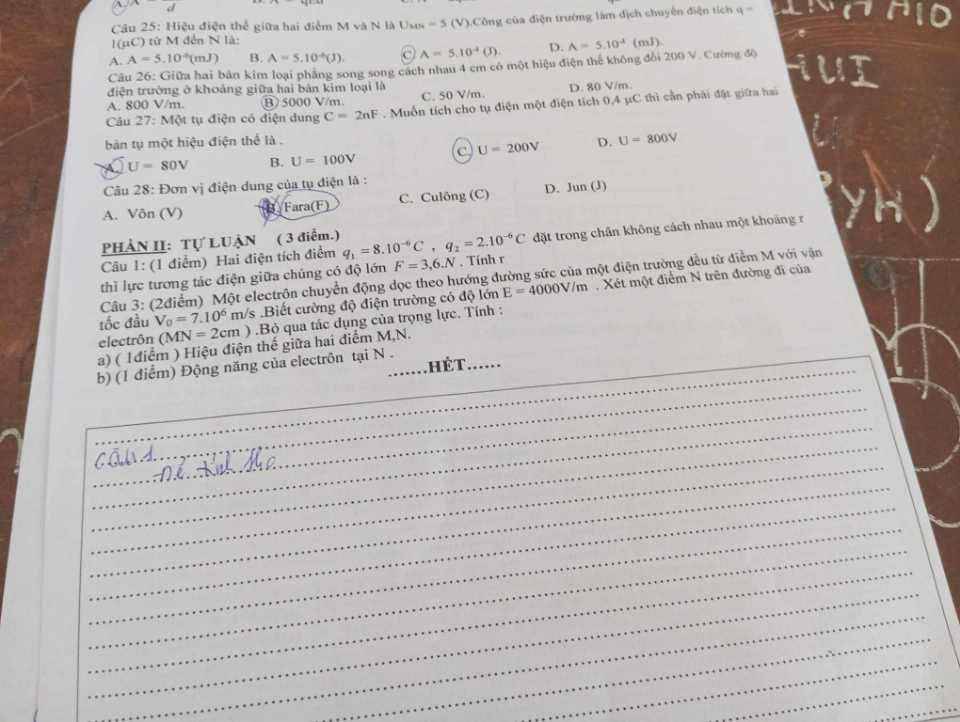Tìm x, biết 3/x = 4/12
Hãy nhập câu hỏi của bạn vào đây, nếu là tài khoản VIP, bạn sẽ được ưu tiên trả lời.


a: Xét ΔAMB và ΔDMC có
MA=MD
\(\widehat{AMB}=\widehat{DMC}\)(hai góc đối đỉnh)
MB=MC
Do đó: ΔAMB=ΔDMC
b: Ta có: ΔAMB=ΔDMC
=>\(\widehat{MAB}=\widehat{MDC}\)
mà hai góc này là hai góc ở vị trí so le trong
nên AB//DC


b: \(10A=\dfrac{10^9+10}{10^9+1}=1+\dfrac{9}{10^9+1}\)
\(10B=\dfrac{10^{10}+10}{10^{10}+1}=1+\dfrac{9}{10^{10}+1}\)
Vì \(10^9+1< 10^{10}+1\)
nên \(\dfrac{9}{10^9+1}>\dfrac{9}{10^{10}+1}\)
=>\(1+\dfrac{9}{10^9+1}>1+\dfrac{9}{10^{10}+1}\)
=>10A>10B
=>A>B

a;
A = \(\dfrac{2}{x-1}\) (đk 1≠ \(x\) \(\in\) z)
A \(\in\) Z ⇔ 2 ⋮ \(x-1\)
\(x-1\) \(\in\) {-2; -1; 1; 2}
Lập bảng ta có:
| \(x-1\) | -2 | -1 | 1 | 2 |
| \(x\) | -1 | 0 | 2 | 3 |
Theo bảng trên ta có: \(x\) \(\in\) {-1; 0; 2; 3}
Vậy để A = \(\dfrac{2}{x-1}\) có giá trị nguyên thì \(x\in\) {-1; 0; 2; 3}

\(x\left(x+1\right)\) = 272
\(x^2\) + \(x\) = 272
\(x^2\) + \(x\) - 272 = 0
\(x^2\) + 17\(x\) - 16\(x\) - 272 = 0
(\(x^2\) + 17\(x\)) - (16\(x\) + 272) = 0
\(x\left(x+17\right)\) - 16.(\(x\) + 17) = 0
\(\left(x+17\right)\)(\(x-16\)) = 0
\(\left[{}\begin{matrix}x+17=0\\x-16=0\end{matrix}\right.\)
\(\left[{}\begin{matrix}x=-17\\x=16\end{matrix}\right.\)
Vậy \(x\in\) {-17; 16}

Tổng vận tốc hai xe là 54:3=18(km/h)
Vận tốc của người I là \(\dfrac{18+6}{2}=12\left(\dfrac{km}{h}\right)\)
Vận tốc của người II là 12-6=6(km/h)
Quãng đường người I đã đi:
\(\left(54+6\times3\right):2=36\left(km\right)\)
Quãng đường người II đã đi:
\(54-36=18\left(km\right)\)
Vận tốc của người I:
\(36:3=12\) (km/giờ)
Vận tốc người II:
\(12-6=6\) (km/giờ)

\(\dfrac{3}{x}\) = \(\dfrac{4}{12}\) (đk \(x\ne\) 0)
\(x\) = 3 : \(\dfrac{4}{12}\)
\(x\) = 9
Vậy \(x=9\)